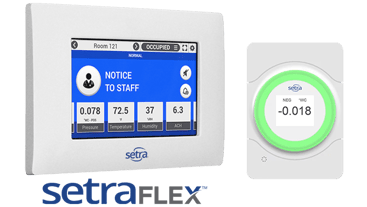The baud rate is the rate at which information is transferred in a communication channel. Baud rate is commonly used when discussing electronics that use serial communication. In the serial port context, "9600 baud" means that the serial port is capable of transferring a maximum of 9600 bits per second.
At baud rates above 76,800, the cable length will need to be reduced. The higher the baud rate, the more sensitive the cable becomes to the quality of installation, due to how much of the wire is untwisted around each device.
Data Bus Devices and Baud Rate
The BACnet MS/TP data bus supports up to 255 devices:
- Up to 128 (0 to 127) devices that are Masters (that can initiate communication)
- Up to 128 (128 to 255) devices that are Slaves (cannot initiate communication)
Setra's Devices
All Setra Systems' electronics are rated at 1/4 load Master devices. However, if a data bus segment with Setra Systems' devices is inter-operating with one or more devices from another manufacturer that supports fewer devices on a data bus segment, then the devices that support the fewest devices on the same data bus is the one that sets the limit for the maximum number of devices for that data bus segment.

CLICK HERE to learn about Setra's BACnet-enabled room pressure monitors.


